Application of Nanotechnology: ITECH 5500 Research Proposal
VerifiedAdded on 2022/10/04
|15
|1295
|119
Presentation
AI Summary
This presentation outlines a research proposal focused on the application of nanotechnology across various sectors, including water treatment, medicine, food management, air quality, electronics, and fabrics. The proposal investigates the theoretical understanding of nanotechnology, its practical applications, and the challenges associated with its implementation. The research employs an epistemology research approach with a survey methodology using questionnaires to gather data from 50 employees. The presentation highlights the research questions, aims, and hypotheses, exploring the relationship between nanotechnology and various applications. The study aims to identify applications and address challenges. The presentation also summarizes relevant literature, including the use of nanotechnology at the nanoscale, and potential of electronics devices. The study will analyze variables and data from primary and secondary sources, employing statistical analysis. Ethical considerations, such as confidentiality and plagiarism avoidance, are also discussed.
1 out of 15
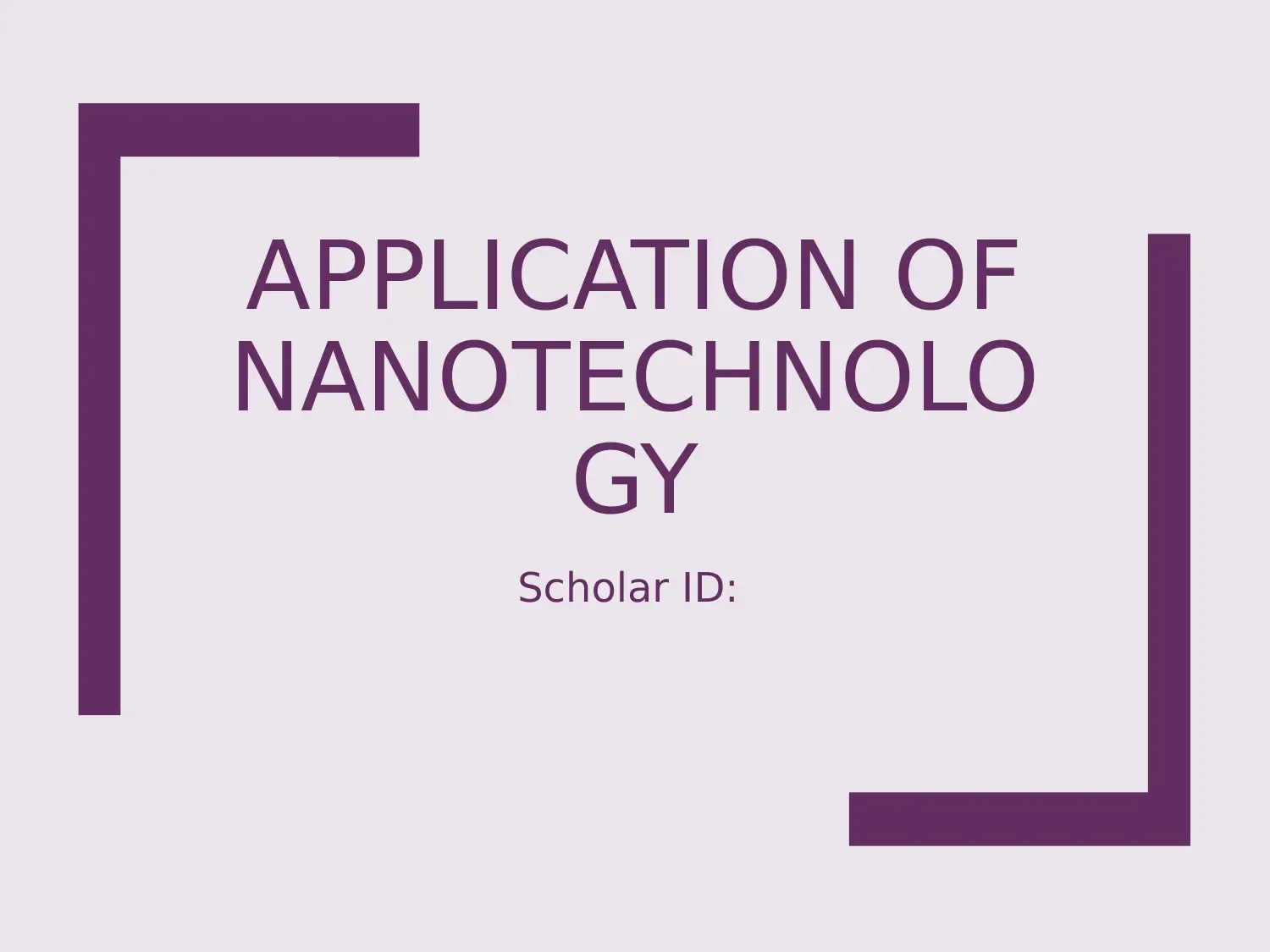
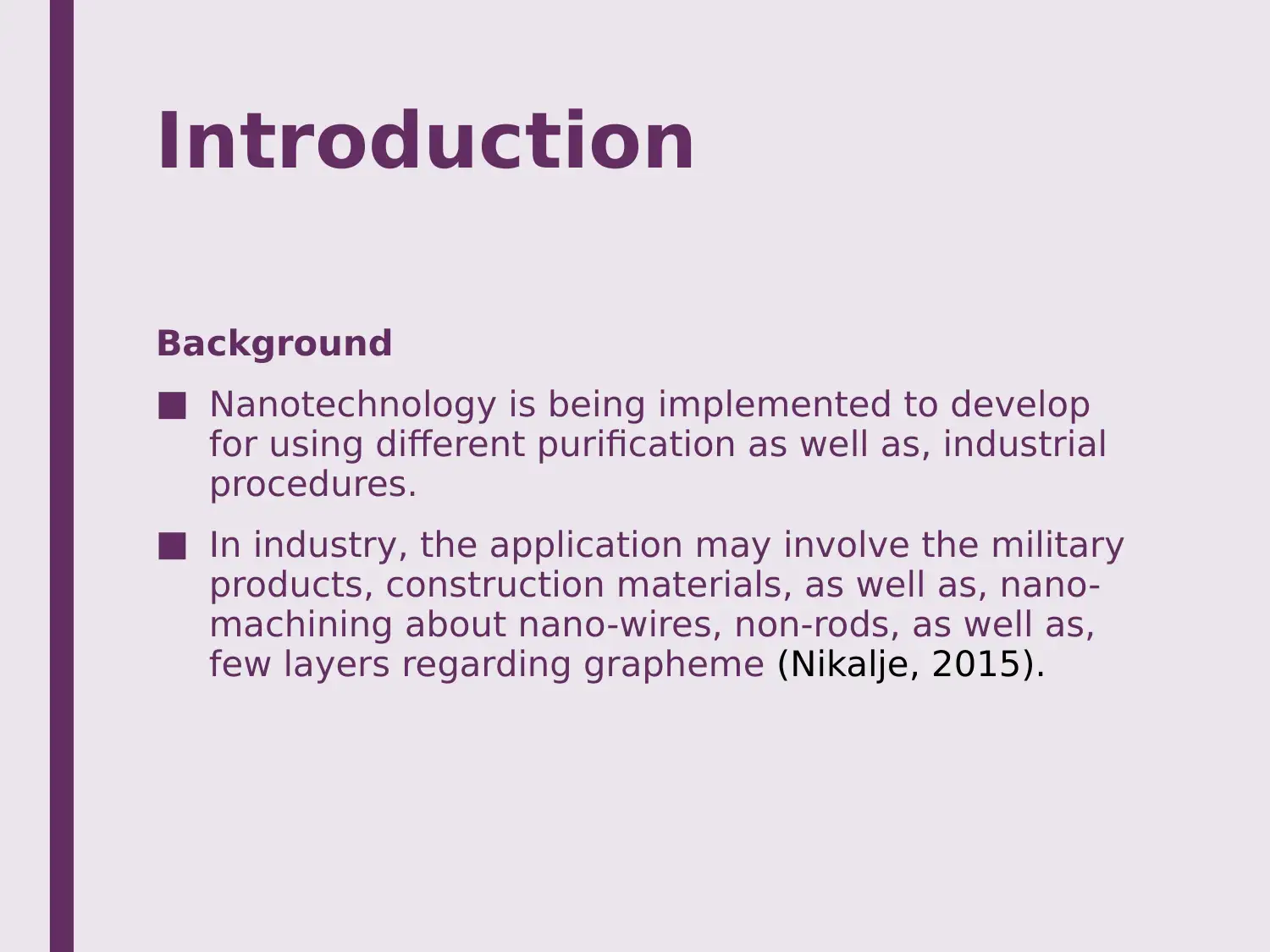
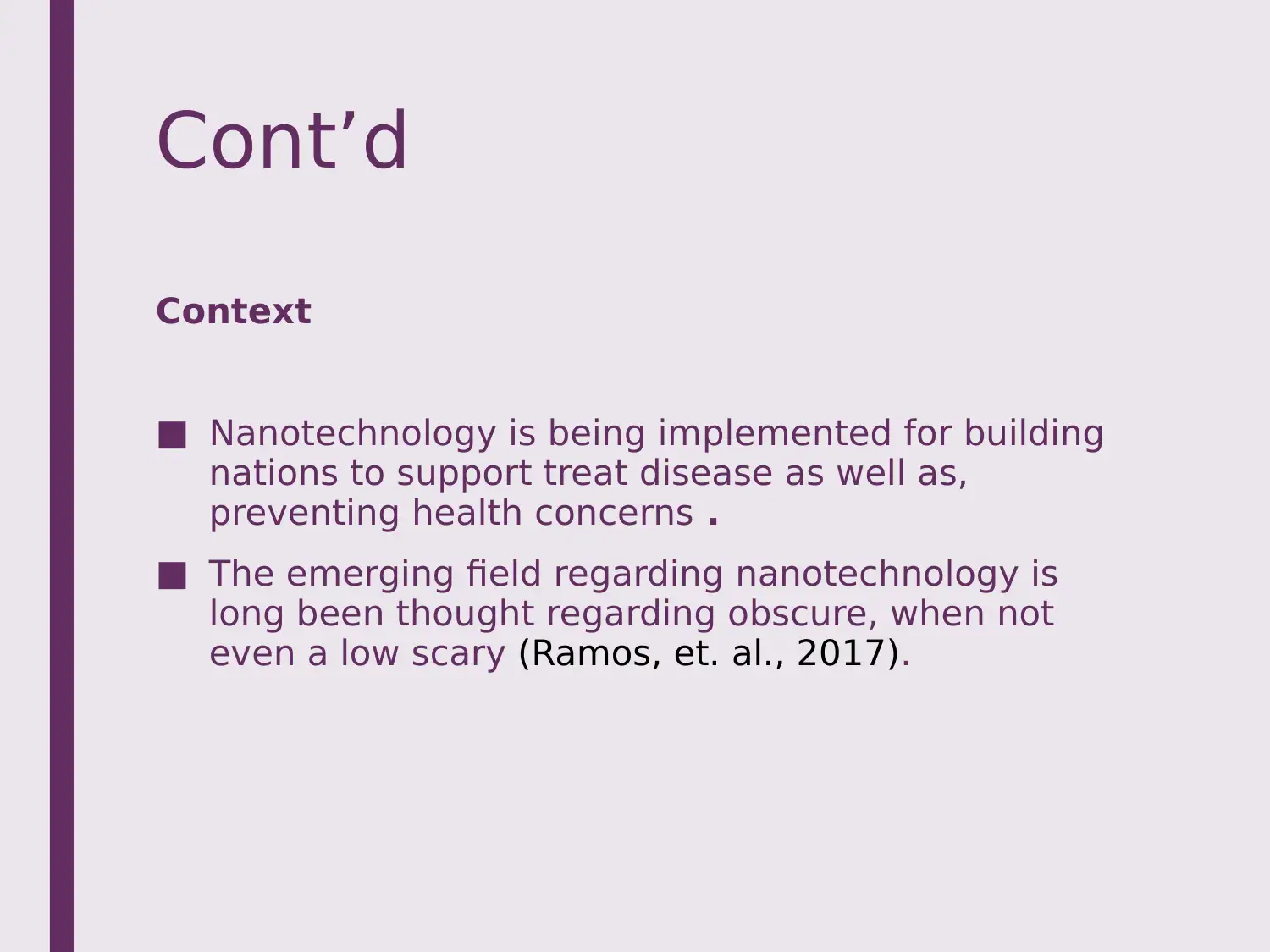

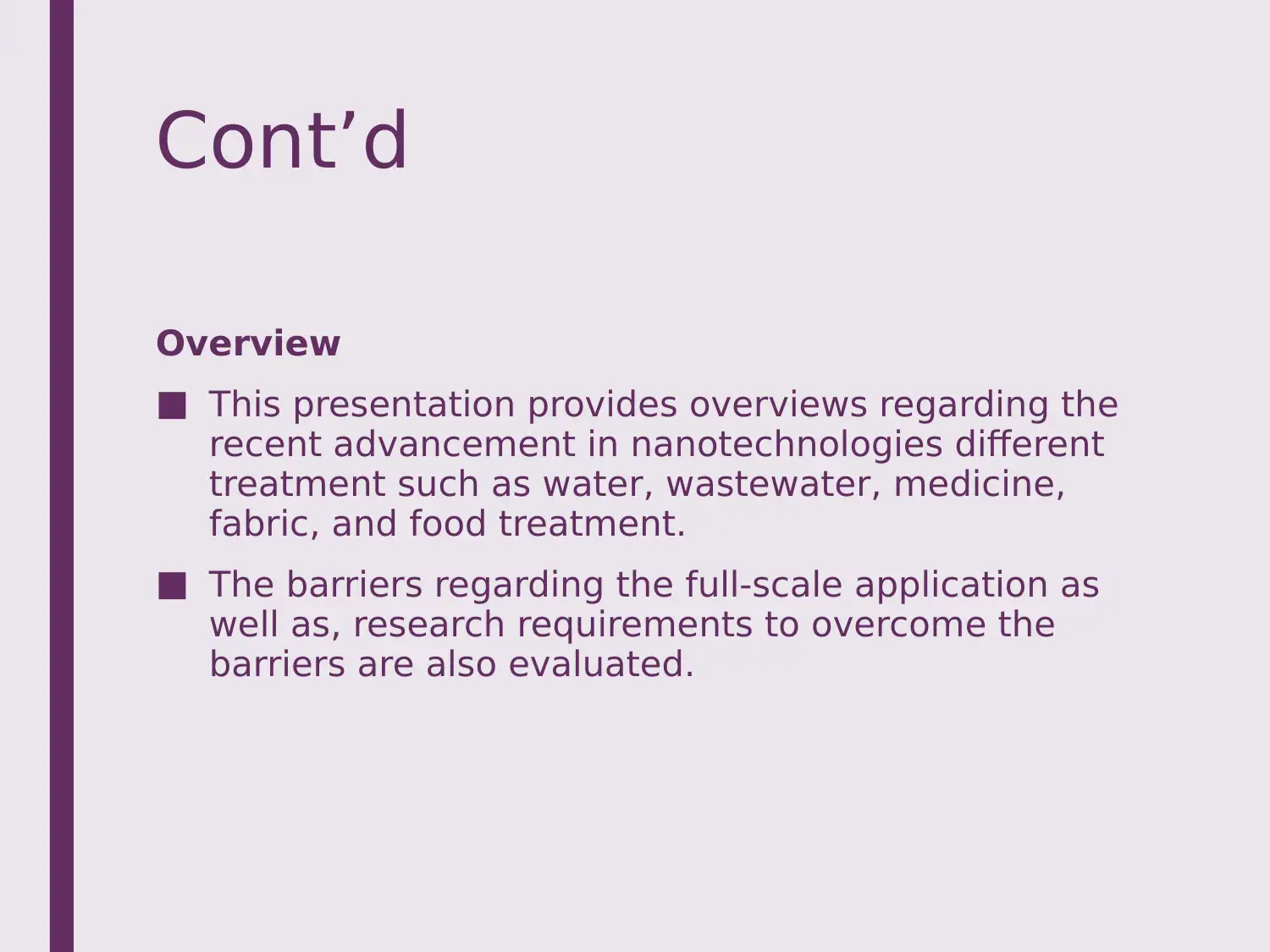
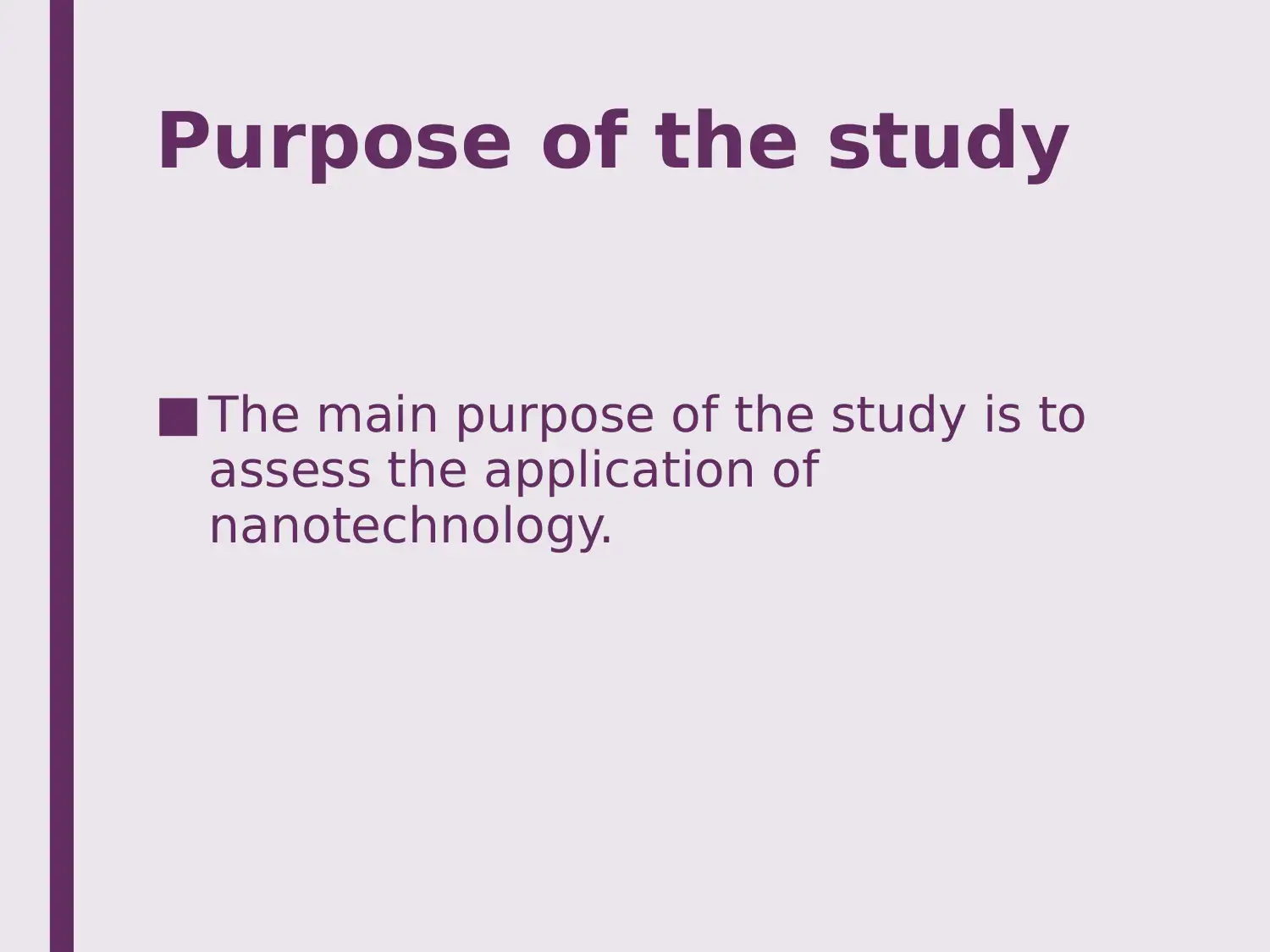
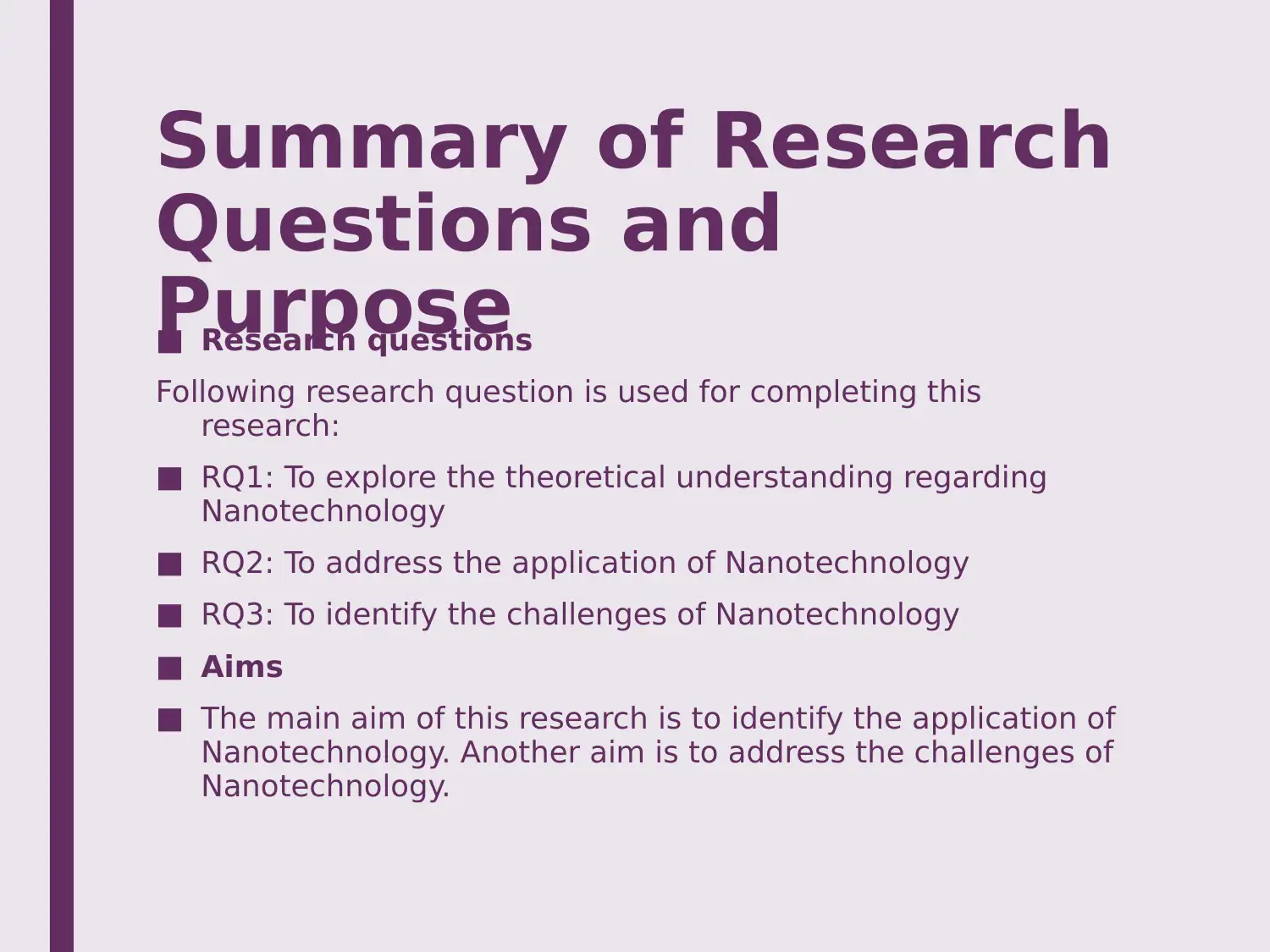
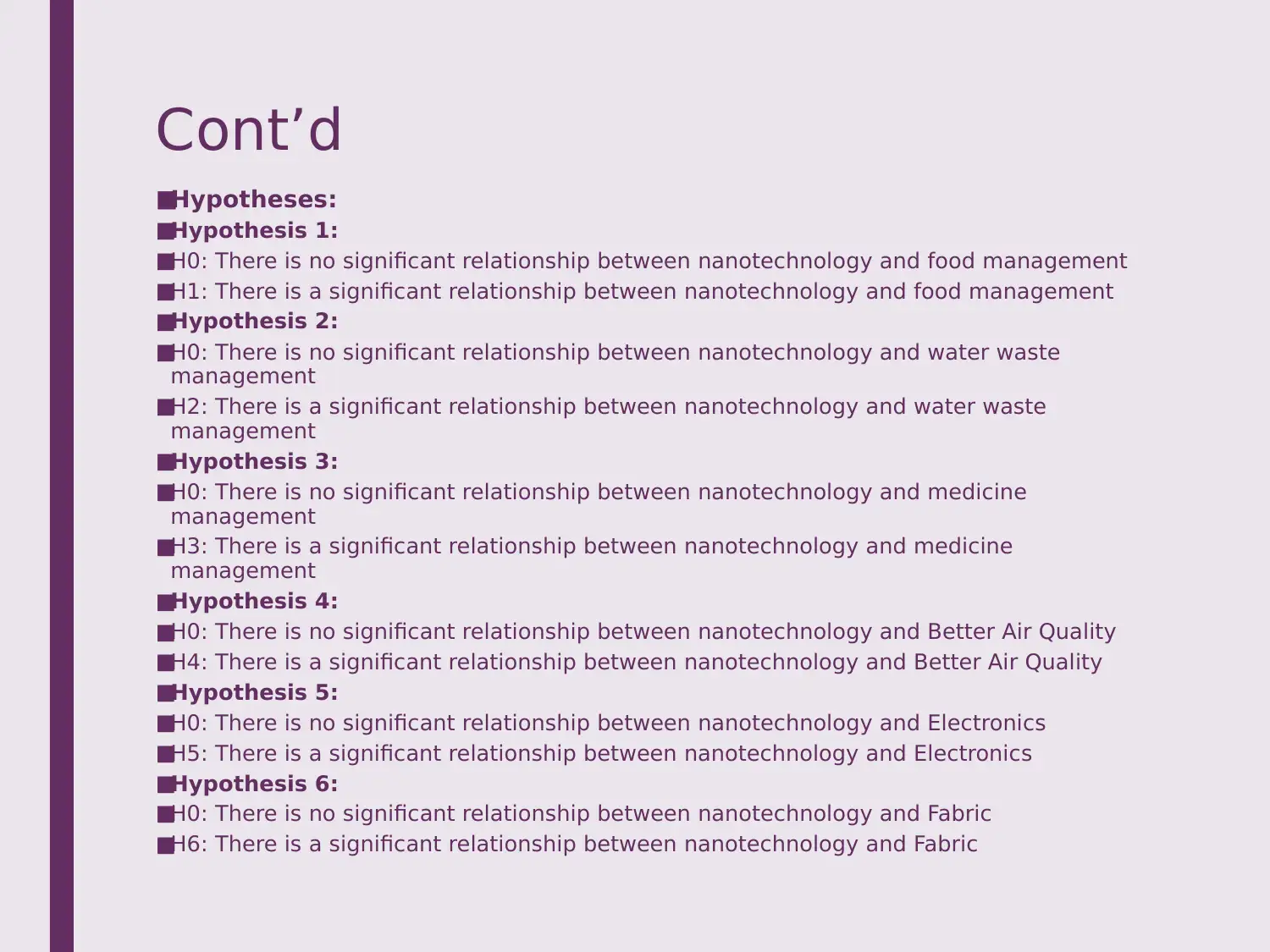
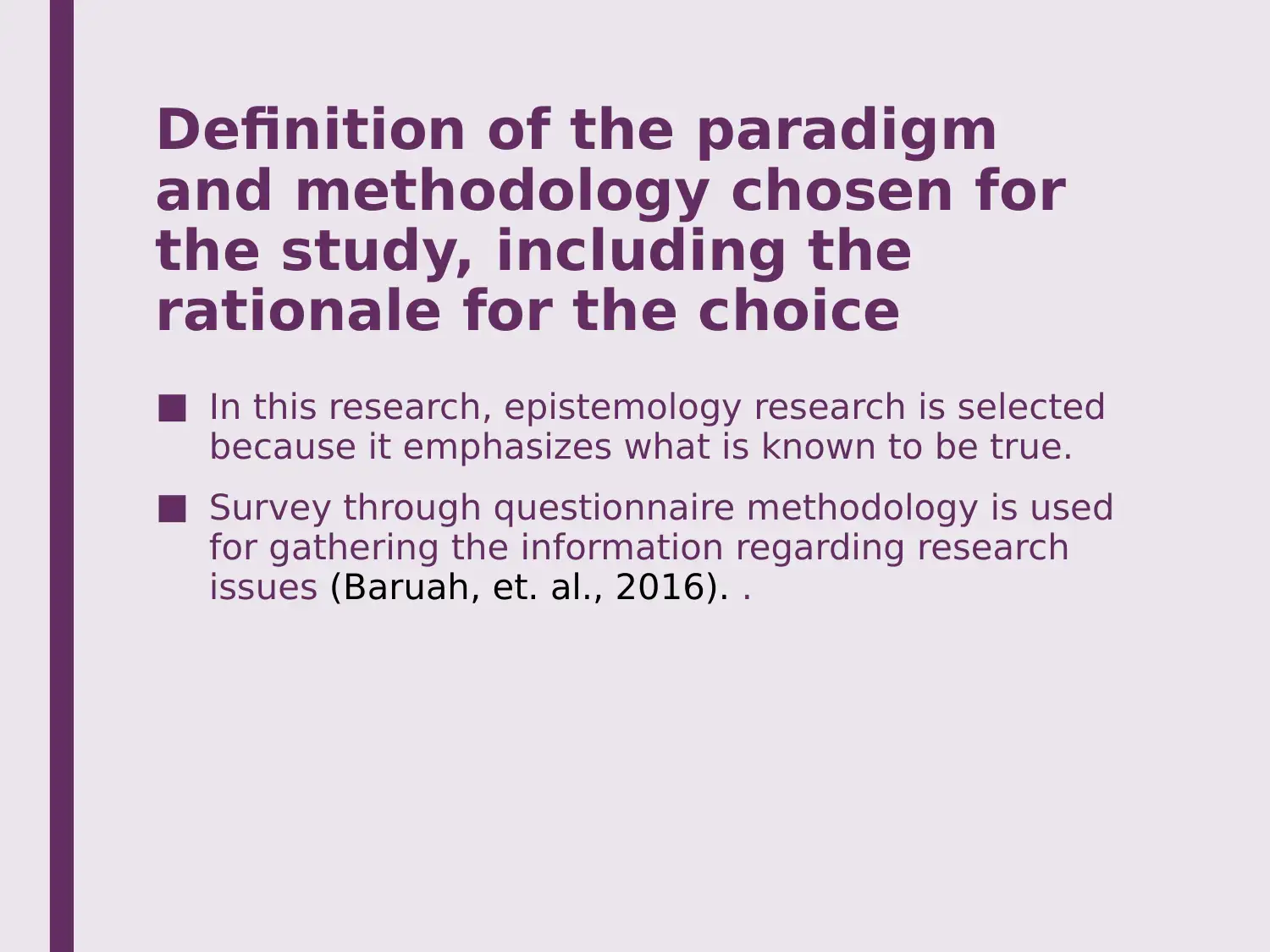
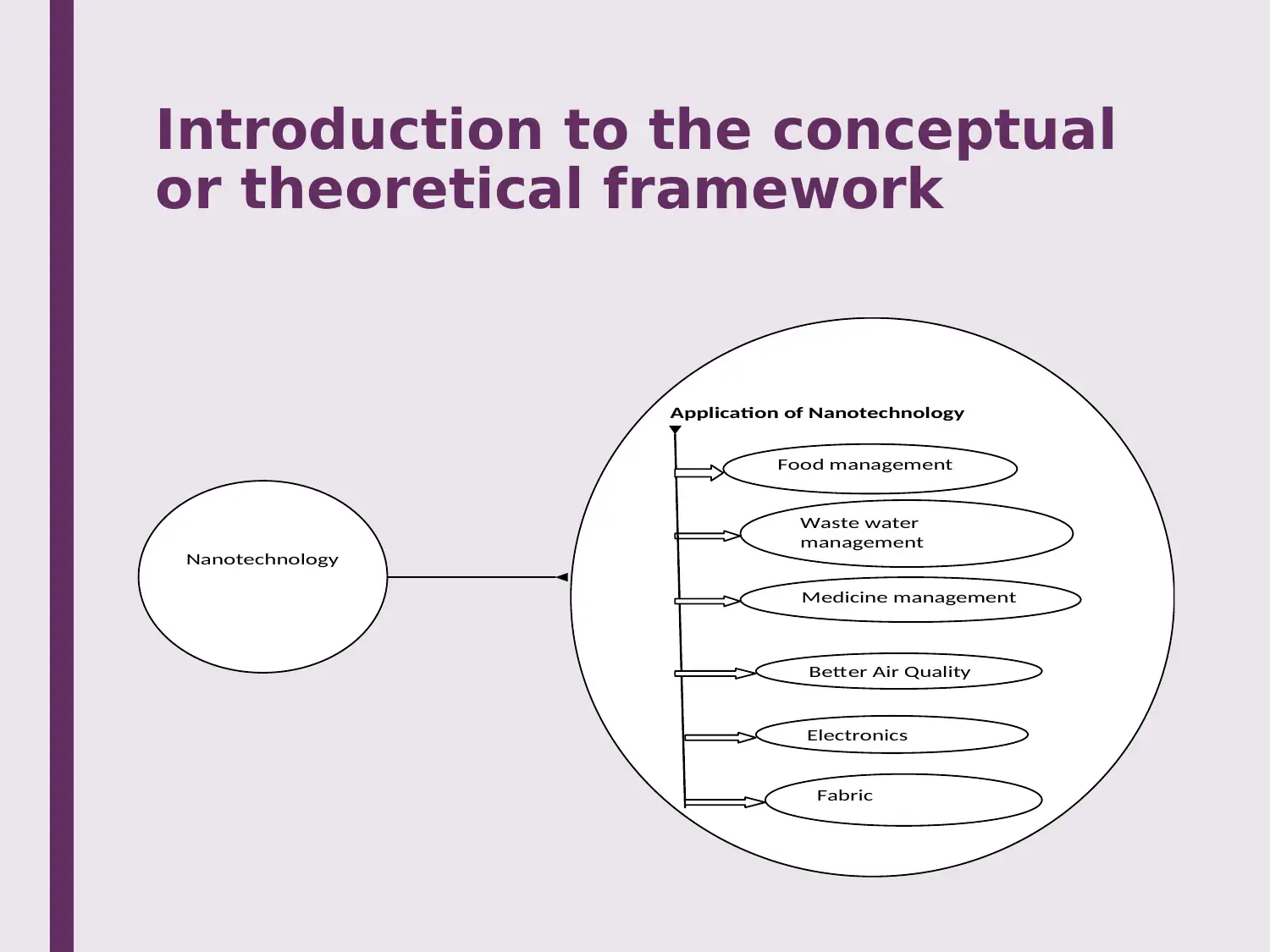
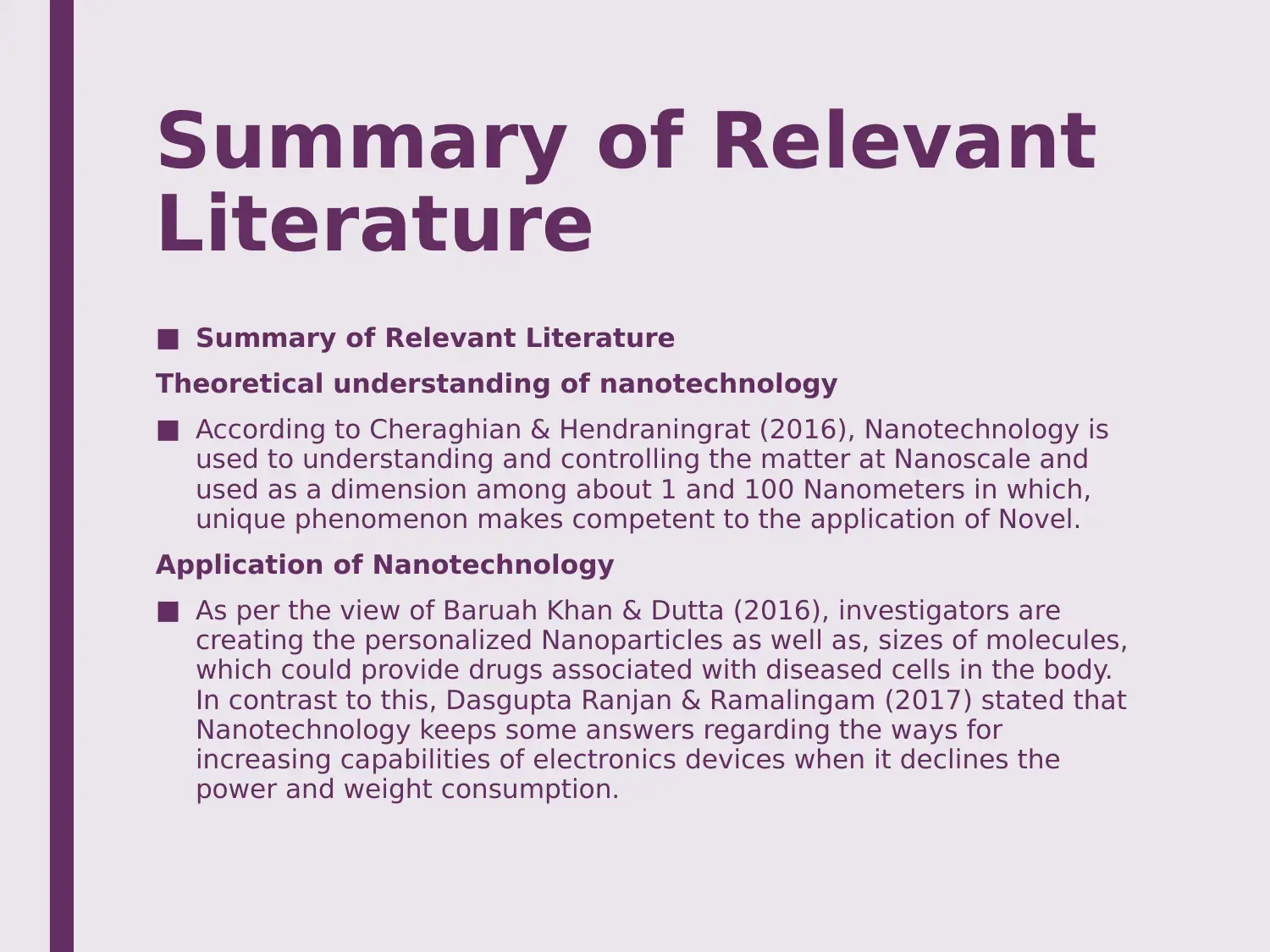
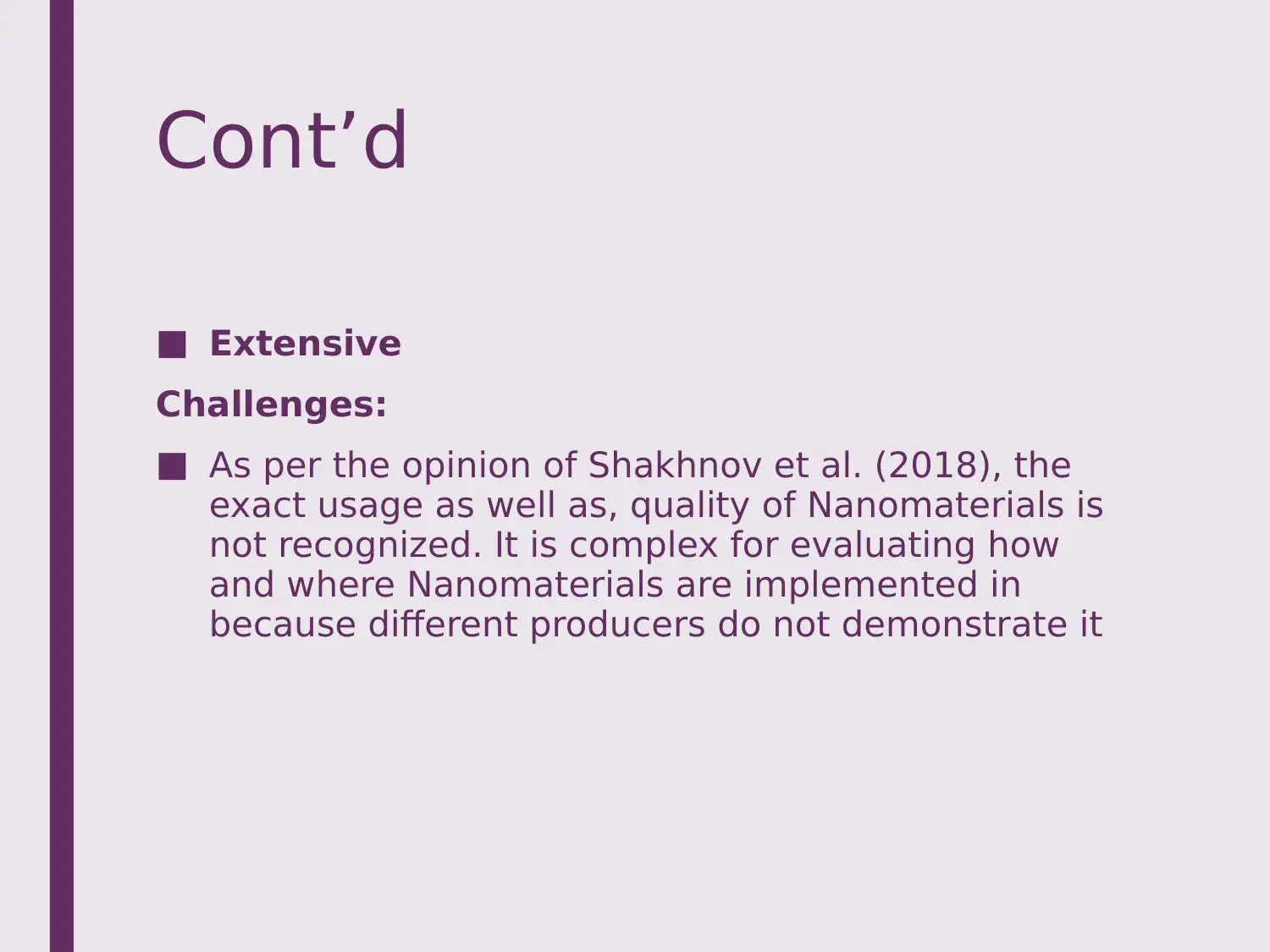
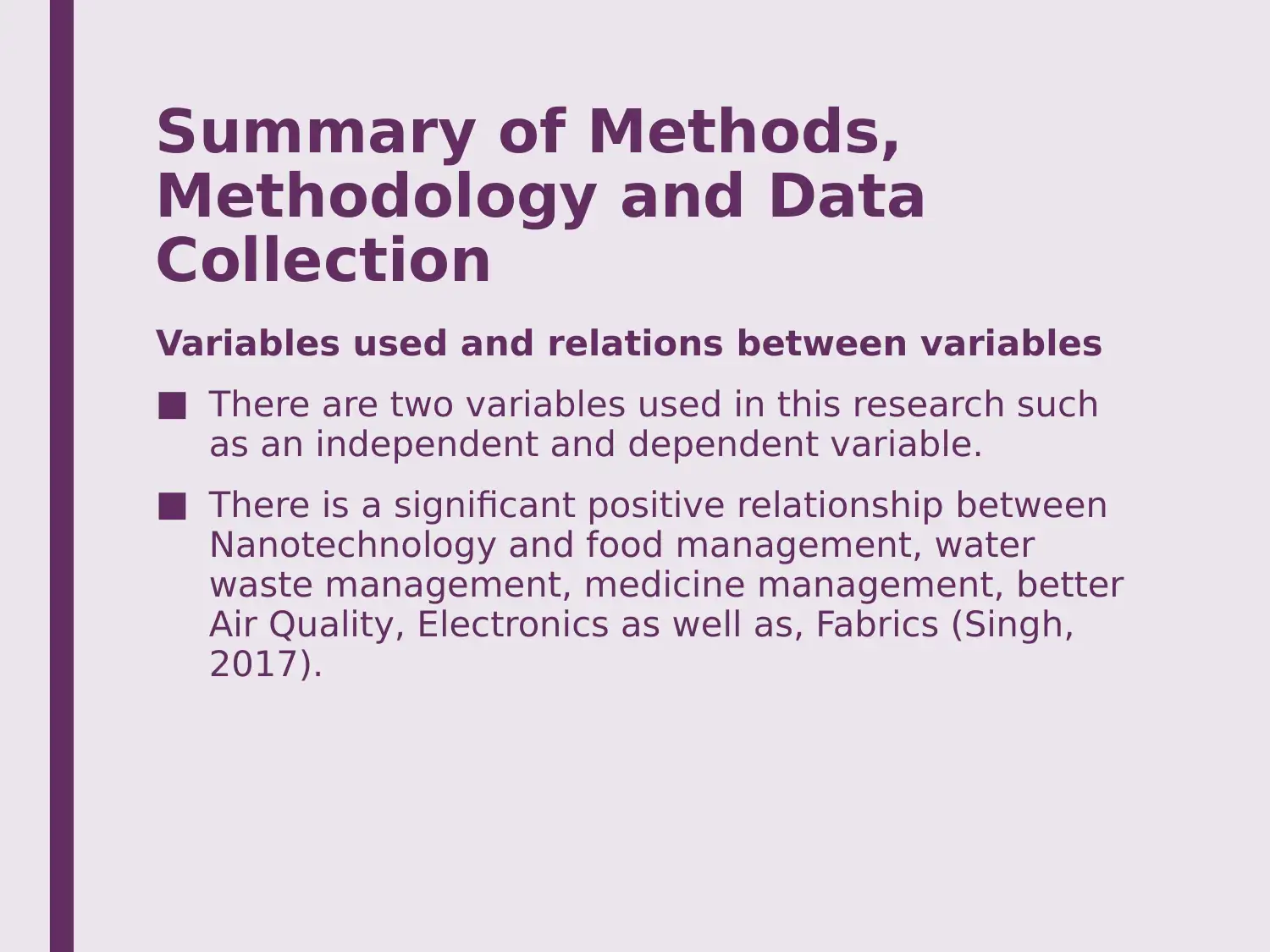
![[object Object]](/_next/static/media/star-bottom.7253800d.svg)